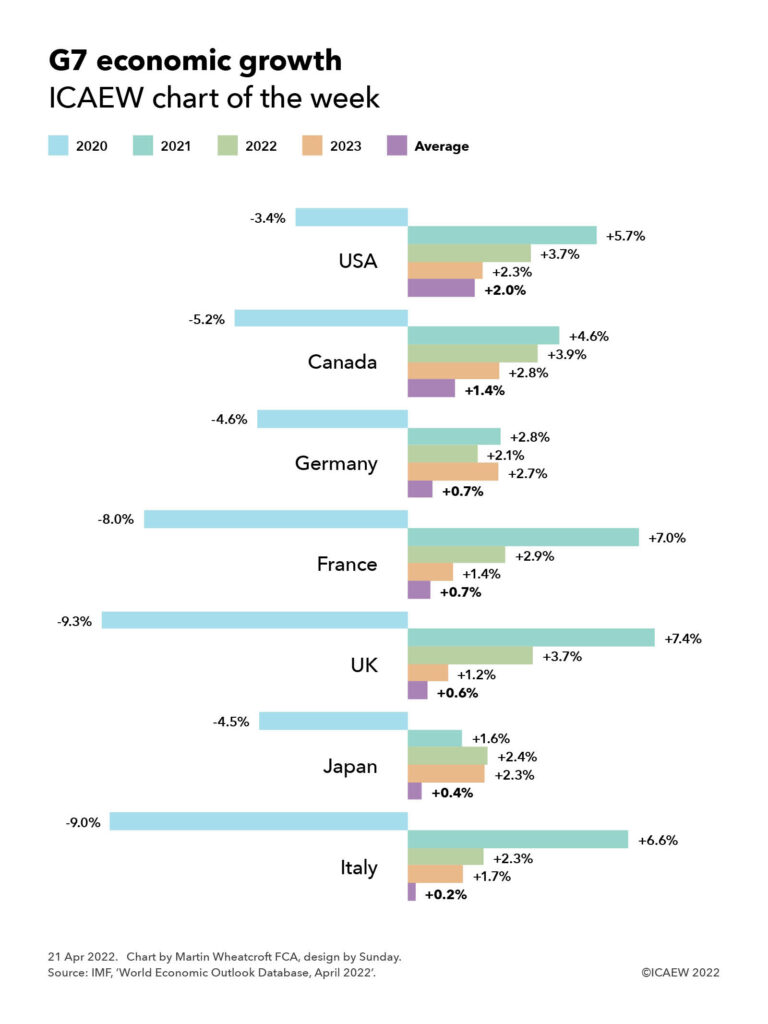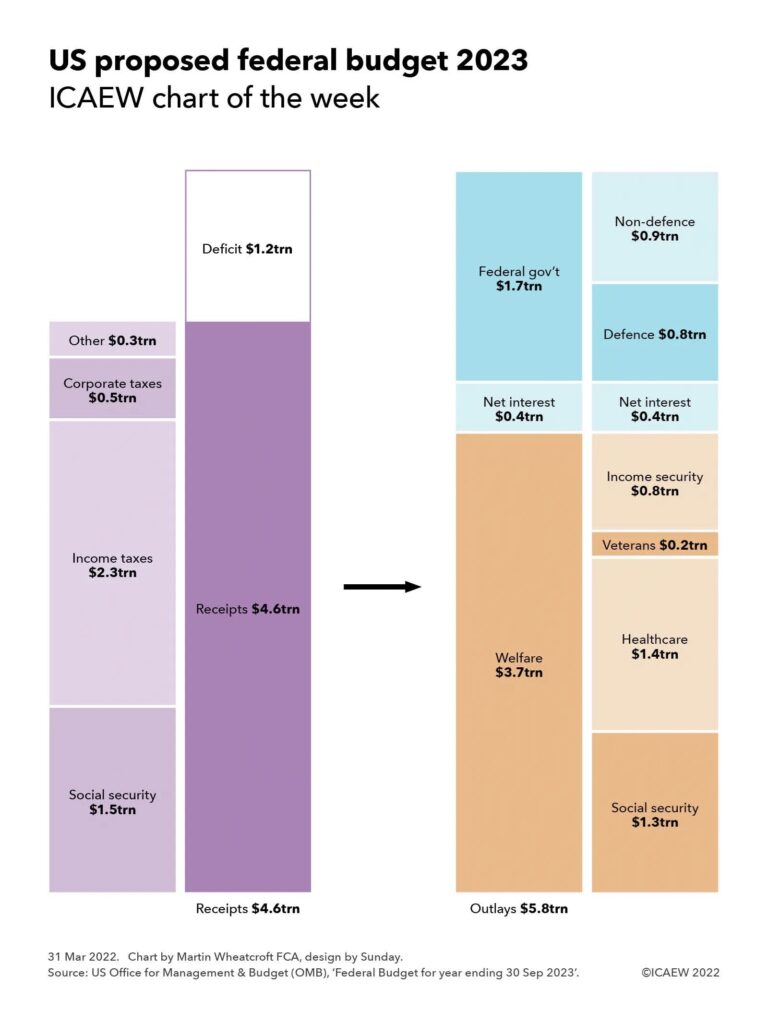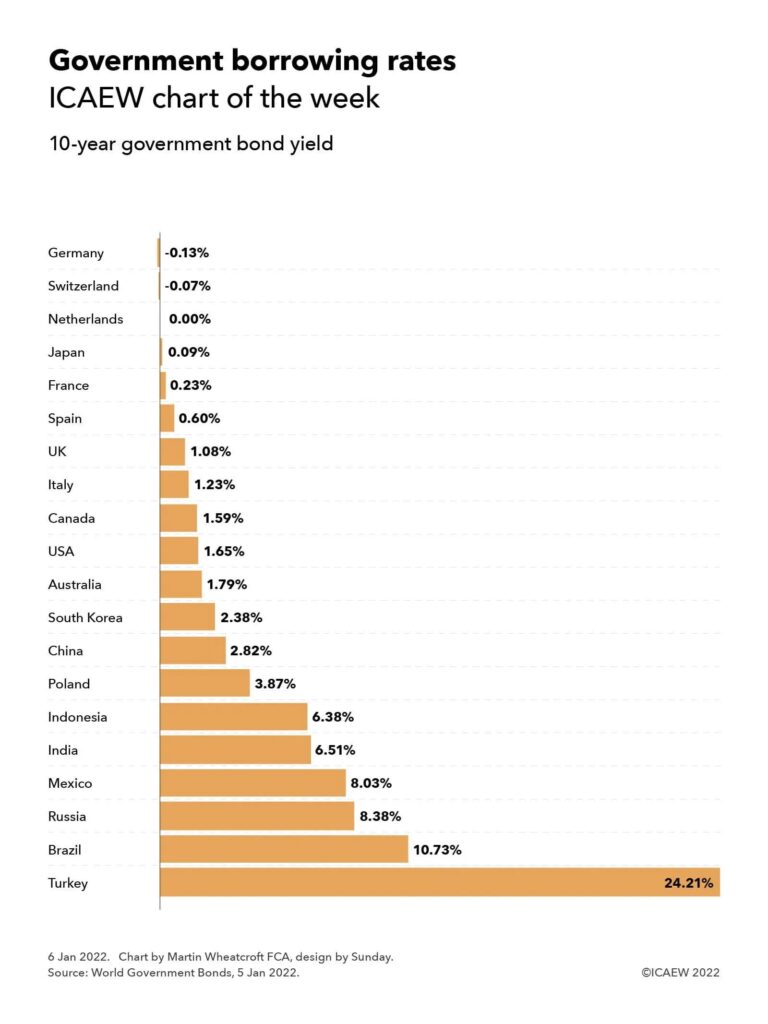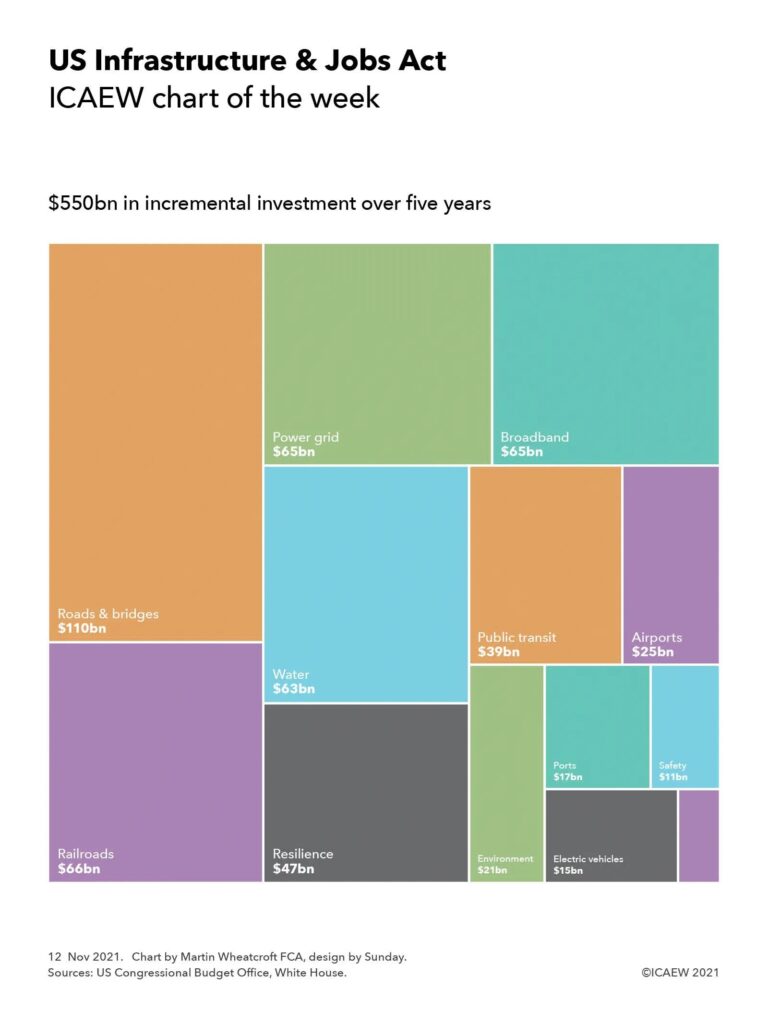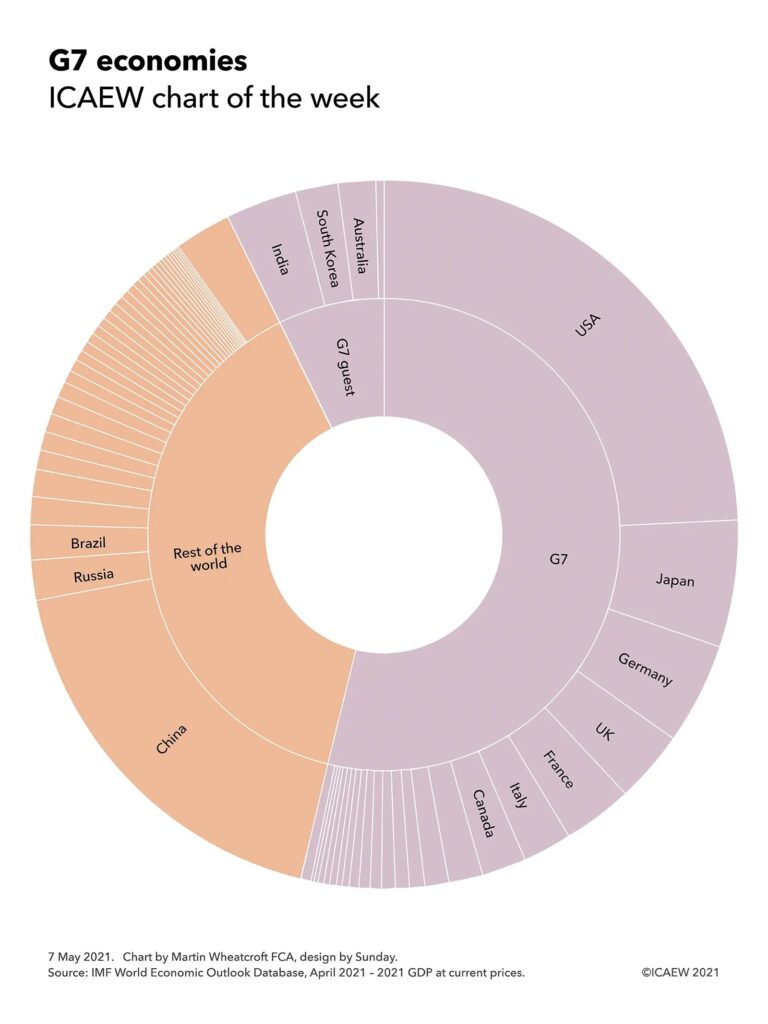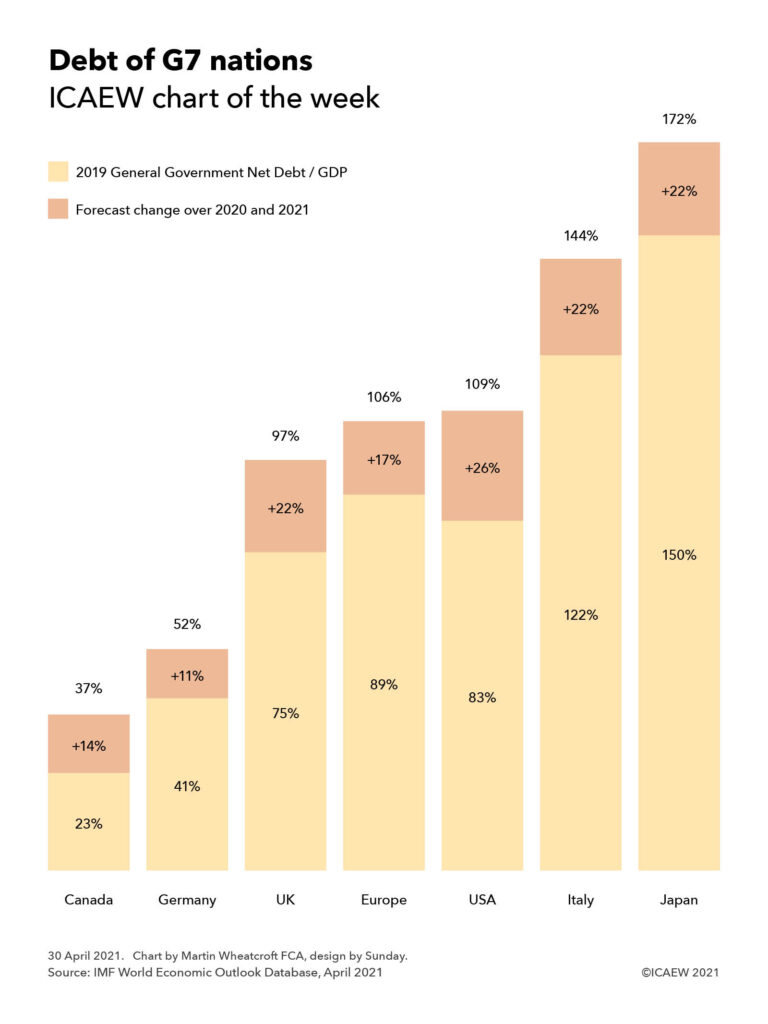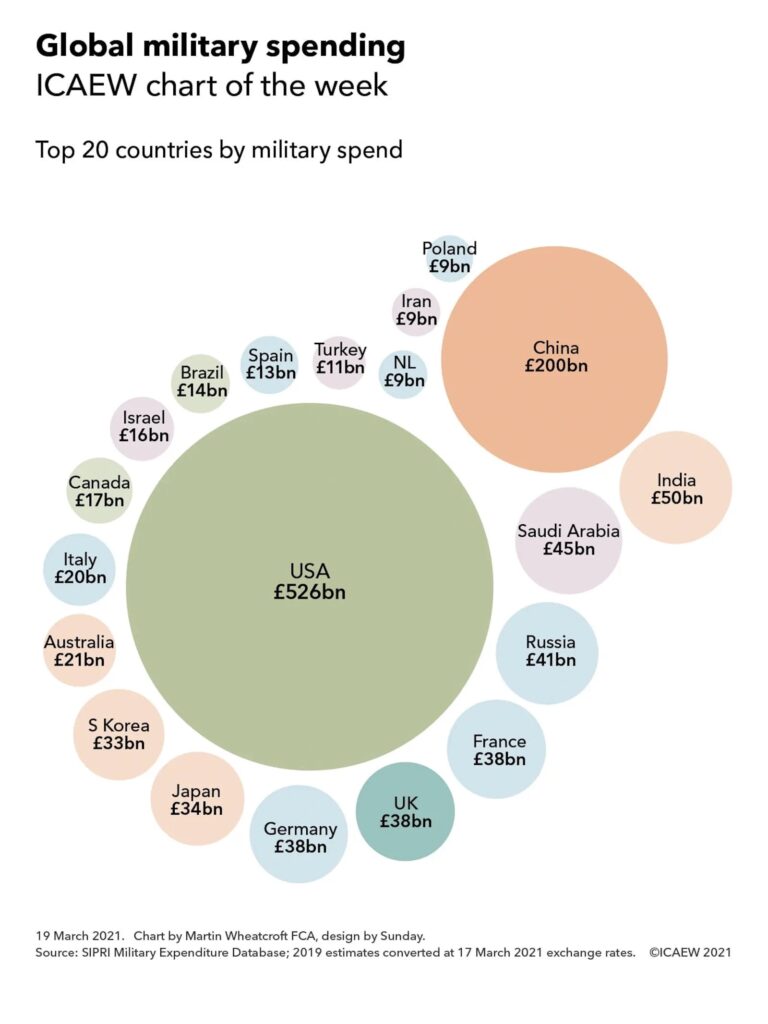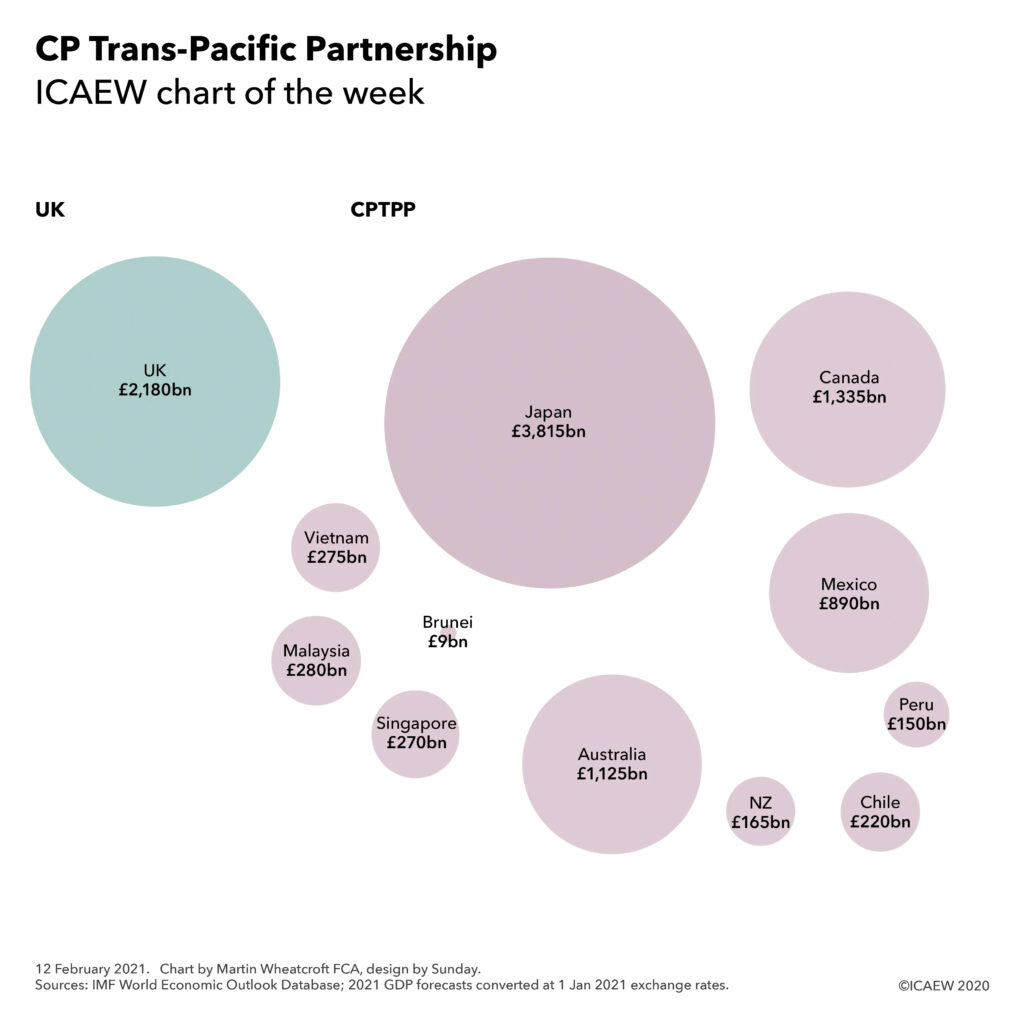The ICAEW chart of the week looks at how the estimated global population of almost 8bn people is distributed around the world.
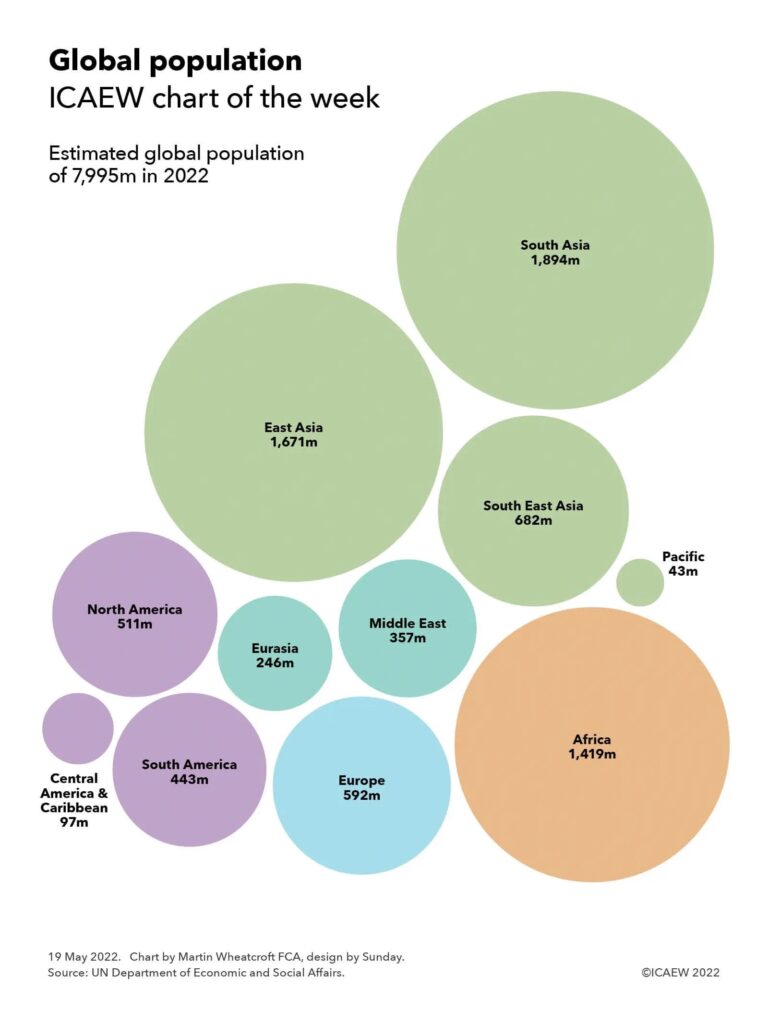
UN projections show that the planetary population will reach approximately 7,955m in June this year, a 1.0% increase over the 7,875m estimate for June 2021.
The largest region on our chart is South Asia, which has 1,894m inhabitants, including 1,411m in India, 216m in Pakistan, 173m in Bangladesh, 40m in Afghanistan and 31m in Nepal. This is followed in size by the 1,671m people living in East Asia, including 1,432m in mainland China (currently the most populous country in the world), 126m in Japan, 52m in South Korea and 26m in North Korea.
Africa is the third largest region with 1,419m inhabitants, with 482m living in Eastern Africa (including Ethiopia 118m, Tanzania 67m, Kenya 56m, Uganda 50m, Mozambique 34m and Madagascar 29m), 424m in Western Africa (including Nigeria 217m, Ghana 32m, Côte d’Ivoire 27m and Niger 26m), 254m in Northern Africa (including Egypt 106m, Sudan 46m, Algeria 45m and Morocco 38m), 190m in Middle Africa (including the Democratic Republic of the Congo 95m, Angola 35m and Cameroon 27m), and 69m in Southern Africa (of which 60m are in South Africa).
Excluding Russia and Belarus, Europe has 592m people, including 444m in the 27 countries of the EU (including Germany 83m, France 66m, Italy 59m, Spain 46m and Poland 38m), 68m in the UK and 43m in Ukraine, although these numbers are all before taking account of the several million Ukrainians who have been forced to flee the war and are living temporarily in other countries.
Eurasia, comprising the Commonwealth of Independent States of Russia, Belarus and the ‘stans’ of central Asia, has 246m inhabitants (including Russia 143m and Uzbekistan 34m), while the Middle East has an estimated 357m people (including Turkey 85m, Iran 85m, Iraq 44m, Saudi Arabia 36m and Yemen 32m.
North America has 511m inhabitants (USA 336m, Mexico 137m, Canada 38m), while 97m live in Central America (52m) and the Caribbean (45m), and 443m live in South America (including Brazil 217m, Colombia 51m, Argentina 46m, Peru 34m and Venezuela 34m).
South East Asia has 682m inhabitants, including 277m in Indonesia, 113m in the Philippines, 100m in Vietnam, 70m in Thailand, 56m in Myanmar and 34m in Malaysia. A further 43m people live in the Pacific region, of which 26m are in Australia.
Although the rate of global population growth was projected to slow significantly in recent years, from 1.3% a year in 2000 when the population was 6.1bn, to 1.0% a year currently and to a forecast of around 0.7% in 20 years’ time, that still means that the number of people on the planet is expected to grow to around 9.8bn in 2050, placing even greater demands on natural resources than today.
This highlights just how important achieving net zero and environmental sustainability is to the lives and wellbeing of future generations.
